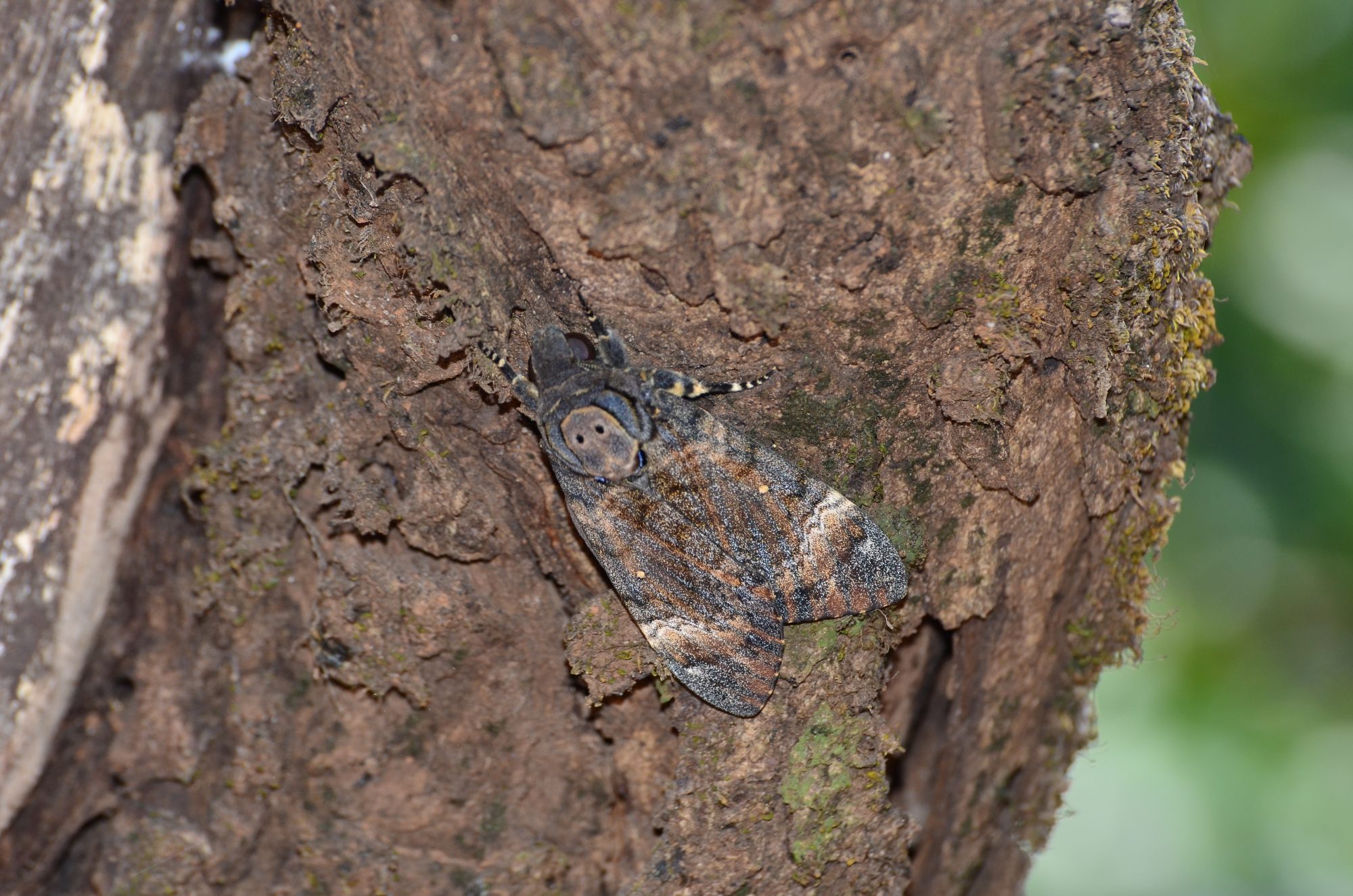As the summer Sun warms the land it defoliates trees and triggers them to flower. And this colorful and fragrant drinking fest attracts millions from beetles to butterflies and Starlings to Giant Squirrels, most of the entrepreneurship is taken by bees. Rock bees swarm looking for ridges, tall trees, steep and high rocks to hive. They start colonies wherever they find such ledges and water nearby. Such a spot was an entrance to a cottage at Forsyth Lodge!
Deepanker the manager had to act quickly before the guests arrive and before the bees hem their wax into a comb. After an inspection he came to the naturalists with a news of another entrepreneur around the bees.
‘It is a large moth you guys must have a look’ he cried.
Death-head mothThis moth had perched behind the lampshade right behind the colony. We could only see it partly and we peered to have a look after negotiating the enquiring worker bees. But the shadow behind the lampshade only threw its largeness and rusty wing overall. After investing on the risk of getting past an active and aggressive rock bee colony, we were determined to find what the moth was upto. We gently tapped the abdomen for it to crawl outside but the moth turned out to be a death-trap to Deep and me! It squeaked and dashed into bees, then it flew at a great speed hysterically and disappered. Deep had exited the passage by then looking for the moth. And I had pushed myself into the wall’s plaster under the lamp and closed my eyes tight. Half-a-minute later it all appeared to be real and I peeled off the plaster and walked out surreptitiously with a prized moth perched on my shoulder!
Death-trap was set to prove the myths of Death-head moth. This smallest of the three Acherontia moths had chosen the lampshade. This is styx species and a Death-head is a name for its skull like pattern on its thorax. Some say it is to deter any attacker and some say it mimics worker bees, but Buffalo Bill makes it ghoulish in the movie The Silence of the Lambs.
‘Bro this BBC’s post says that they feed on the honey Bro’ exclaimed Bejoy reading about Death-heads in his uncanny naturalist’s enthusiasm. We piled on to read about this snatching the screen away from him. The Death-head moths are known to savour honey from median bees of Europe. It is also said that they make squeaking noise around the hives. And Heinrich Prell who unraveled this in German in 1920 went unnoticed by English readers, he writes about its fondness for honey probing with a short proboscis. He also had decapitated a death-head to find where and how it makes the deathly squeaks. He finds that the moth has its pharynx adapted to inflate-deflate instead of clicking like Erebid moths or any other moths that make sounds from their bodily adaptations.
As the fascination grew about this beautiful moth, of its myths and its physics, I stumbled upon recent discoveries on its chemical capabilities too. That they can mimic the scent of the bees and feel at-home from defensive workers to feast on their honey! Isn’t this a heist entrepreneurship of one insect over several armed entrepreneurs in the heat of summer that work as one?
What has this Acherontia moth got to do with squeaking sounds which we too heard while setting it back on lampshade is still unclear. Could it just be a defense? Is it in the bees’ vocabulary? Another question that squeaked to me is what motivates a moth to feed on honey- a protein rich sugar? We now are following the Death-head moth’s life-cycle and following bees for their marvellous predators.












Recent Comments